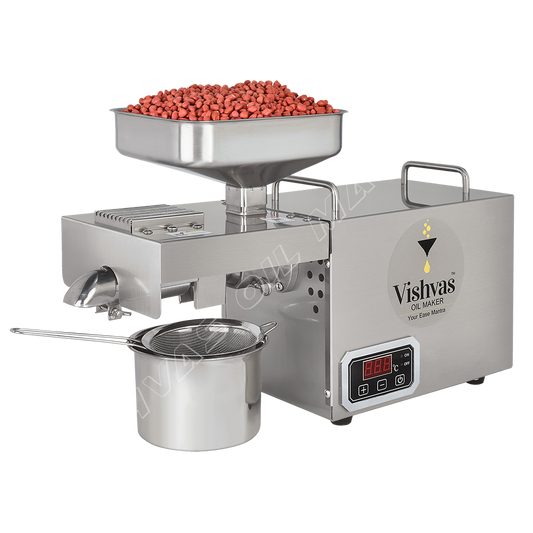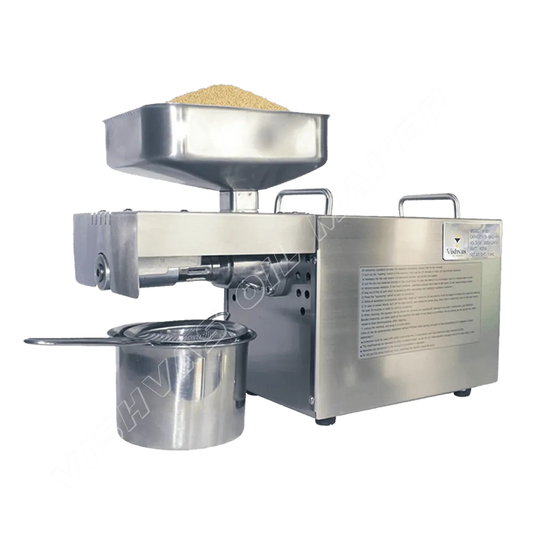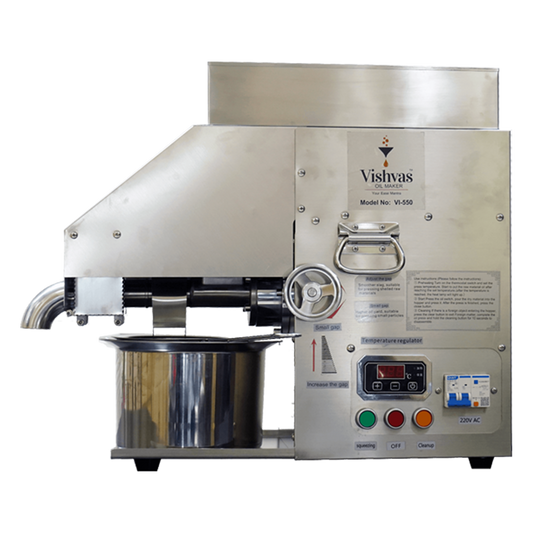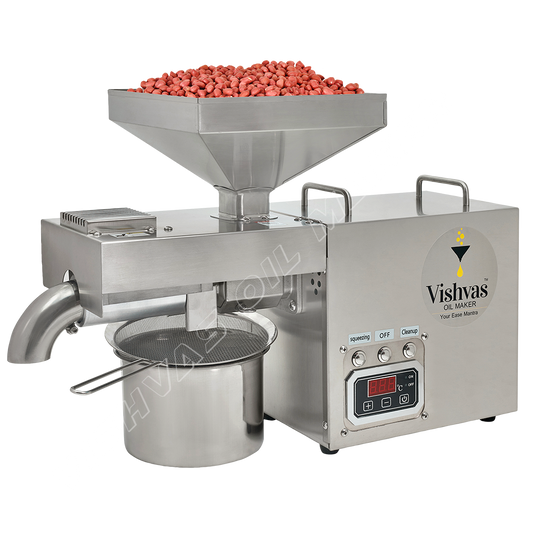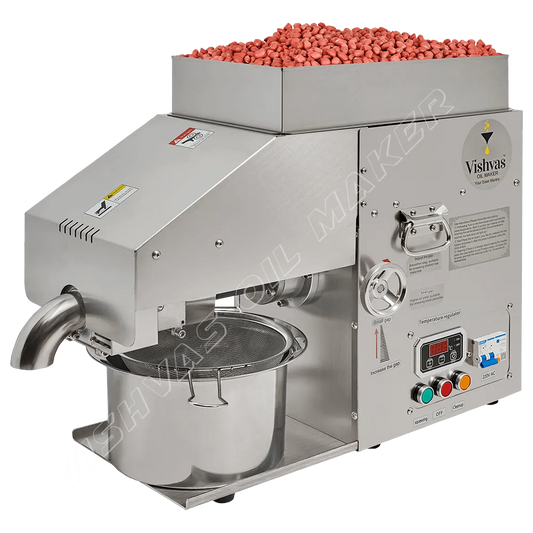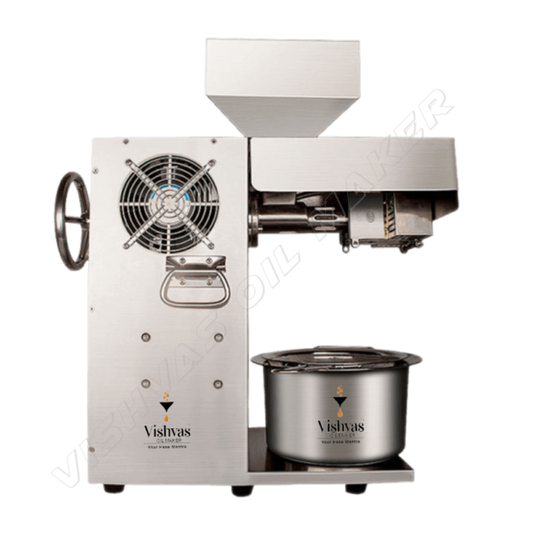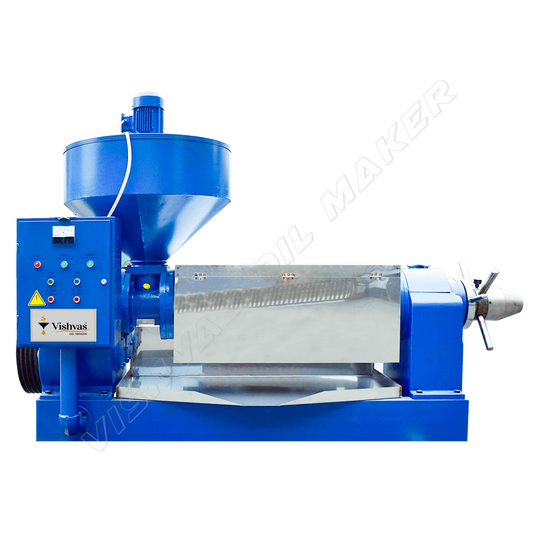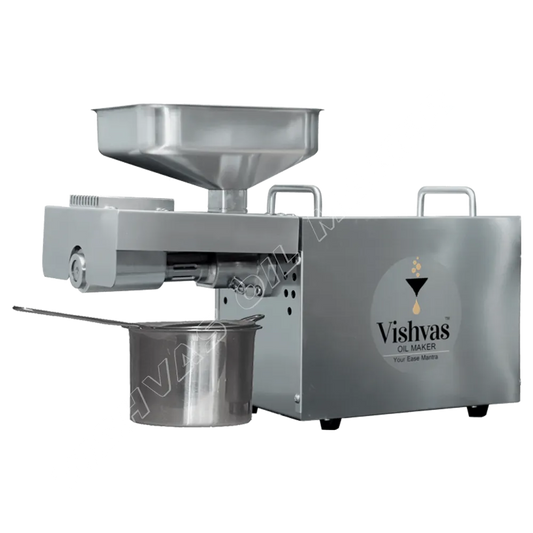Collection: Products
-
VI-582TC8 reviews
Domestic Oil Press Machine | Domestic Oil Extraction Machine VI-582TC
Regular price ₹24,500Sale price ₹24,500 Regular priceUnit price / per₹34,000(Including 18% GST)(Including 18% GST)Sale -
VI-3914 reviews
Domestic Oil Press Machine | Home Use Oil Press Machine VI-391
Regular price ₹18,500Sale price ₹18,500 Regular priceUnit price / per₹29,500(Including 18% GST)(Including 18% GST)Sold out -
VI-550No reviews
Mini Commercial Oil Pressing Machine | VI-550
Regular price ₹75,000Sale price ₹75,000 Regular priceUnit price / per₹90,000(Including 18% GST)(Including 18% GST)Sold out -
VI-4403 reviews
Mini Commercial Oil Press Machine | VI-440
Regular price ₹52,000Sale price ₹52,000 Regular priceUnit price / per₹75,000(Including 18% GST)(Including 18% GST)Sale -
VI-7704 reviews
Mini Commercial Oil Press Machine | Mini Commercial Oil Machine VI-770
Regular price ₹110,000Sale price ₹110,000 Regular priceUnit price / per₹145,000(Including 18% GST)(Including 18% GST)Sale -
VI-660No reviews
Mini Commercial Oil Press Machine | Mini Commercial Oil Expeller Machine VI-660
Regular price ₹99,500Sale price ₹99,500 Regular priceUnit price / per₹115,000(Including 18% GST)(Including 18% GST)Sold out -
VI-20000(A)2 reviews
Commercial Oil Press Machine | Cold Press Oil Machine Commercial VI-20000(A)
Regular price ₹1,829,000Sale price ₹1,829,000 Regular priceUnit price / per₹1,979,000(Including 18% GST)(Including 18% GST)Sale -
VI-5822 reviews
Domestic Oil Press Machine | Automatic Oil Press Machine for Home Use VI-582
Regular price ₹23,500Sale price ₹23,500 Regular priceUnit price / per₹33,000(Including 18% GST)(Including 18% GST)Sold out

